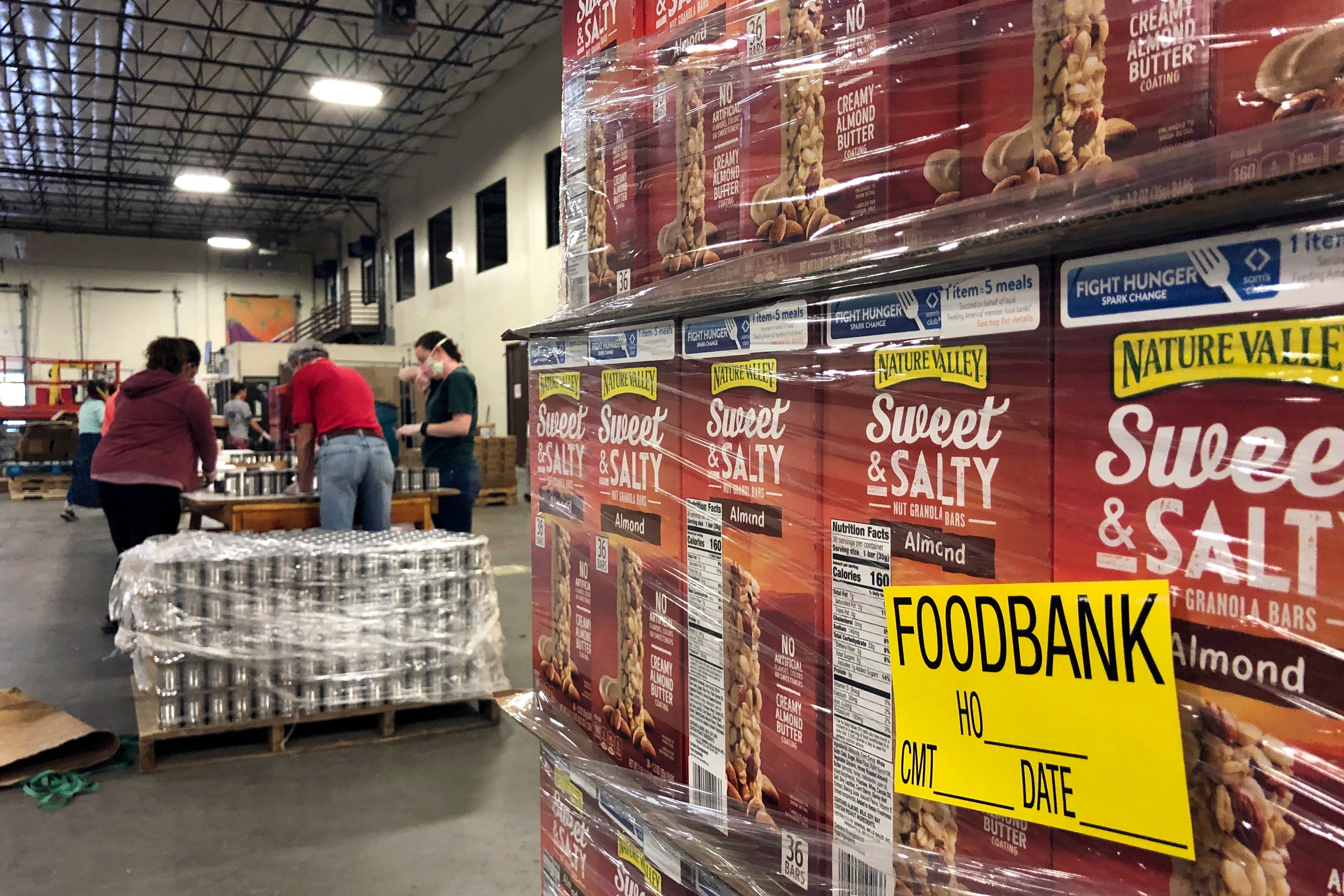Seventeen million households in the US face food insecurity as hunger surges
Food insecurity is on the rise after years of decline - but what is causing this trend?

Your support helps us to tell the story
From reproductive rights to climate change to Big Tech, The Independent is on the ground when the story is developing. Whether it's investigating the financials of Elon Musk's pro-Trump PAC or producing our latest documentary, 'The A Word', which shines a light on the American women fighting for reproductive rights, we know how important it is to parse out the facts from the messaging.
At such a critical moment in US history, we need reporters on the ground. Your donation allows us to keep sending journalists to speak to both sides of the story.
The Independent is trusted by Americans across the entire political spectrum. And unlike many other quality news outlets, we choose not to lock Americans out of our reporting and analysis with paywalls. We believe quality journalism should be available to everyone, paid for by those who can afford it.
Your support makes all the difference.One million more families with children had problems getting enough food in 2022 than the year before, the US Department of Agriculture (USDA) revealed in a report on Wednesday. Overall, the USDA reported that around 17 million households in the US are food insecure.
The report revealed that around 3.3 million households with children in the US had food insecurities, compared to the estimated 2.3 million households in 2021.
This rise has disrupted the pattern of a decline between 2011 and 2021 in the difficulty of families securing food.
But why is this trend on the rise again?
While the USDA does not go into the reasons behind their survey outcome, the US Census Bureau has suggested that families on a low income may have struggled to recover from the pandemic when more widespread food assistance was in operation.
With prices becoming more unaffordable and aid from the government in providing food solutions for families, it has potentially meant that one million more households with children are experiencing food insecurity.
One of these rollbacks has included the end of universal free school lunches, which expired in the summer of 2022.
“These were healthy, nutritious meals because the schools had good standards,” said Geri Henchy, the director of nutrition policy for the Food Research and Action Center.
“It was great for the kids. It was stigma-free, and it was huge for people’s budgets.”
Tom Vilsack, the United States Secretary of Agriculture, responded to the survey’s results, calling it “unacceptable” and saying that it should be a “wake-up call” for those who wanted to stop the anti-hunger programmes.
“The experience of the pandemic showed us that when government invests in meaningful support for families, we can make a positive impact on food security, even during challenging economic times,” Mr Vilsack said in a statement.
“No child should go hungry in America. The report is a stark reminder of the consequences of shrinking our proven safety net.”

The Women, Infants and Children (WIC) program, one government scheme, provides supplemental foods and healthcare referrals to pregnant women, in postpartum and infants up to five who come from low-income backgrounds.
The USDA said in September that if the WIC were shut down, around seven million people would be affected by the benefits being taken from them.
A spokesperson for the White House said President Joe Biden will maintain WIC as a programme.
“17 million households experiencing food insecurity in the richest nation in the world is unacceptable, and exactly why President Biden has continued to call on Congress to fund programs like WIC, as well as the Supplemental Nutrition Assistance Program (SNAP), the National School Lunch Program, and restore the enhanced Child Tax Credit that helped cut child poverty in half and helped millions of families afford the basics,” Jeremy Edwards, the spokesperson said.
While some government programs will remain, the consequences of the rollback of many others already materialised back in winter 2022, when food banks could not cope with demand.
Bread for the City, a low-income service in Washington DC, is one of many charities that were underprepared for the volume of clients waiting to claim food services from them, reports AP.
The charity budgeted 20 per cent higher than pre-pandemic levels, but despite this, way more people came than expected who now felt food insecure.
Subscribe to Independent Premium to bookmark this article
Want to bookmark your favourite articles and stories to read or reference later? Start your Independent Premium subscription today.
Join our commenting forum
Join thought-provoking conversations, follow other Independent readers and see their replies
Comments